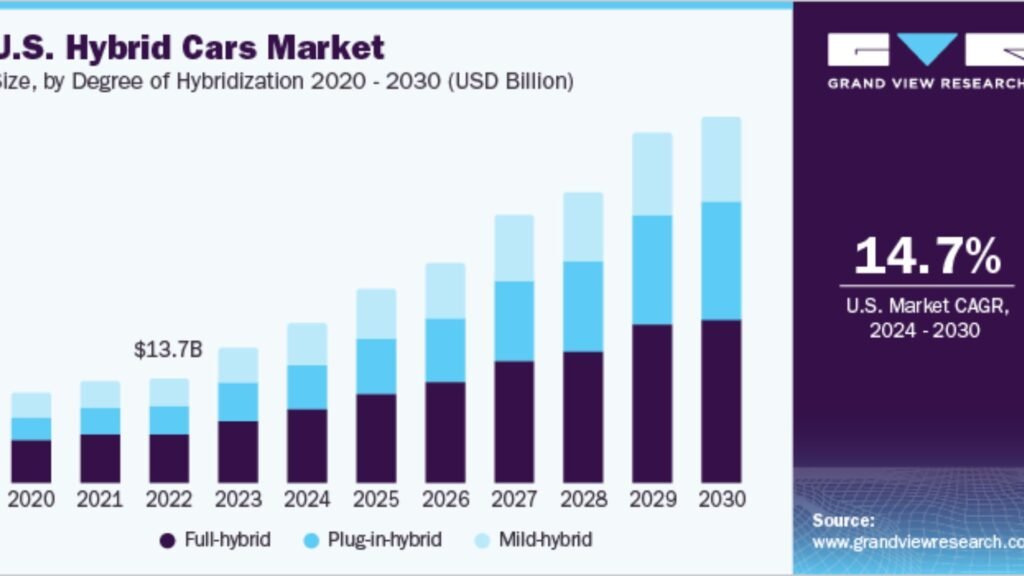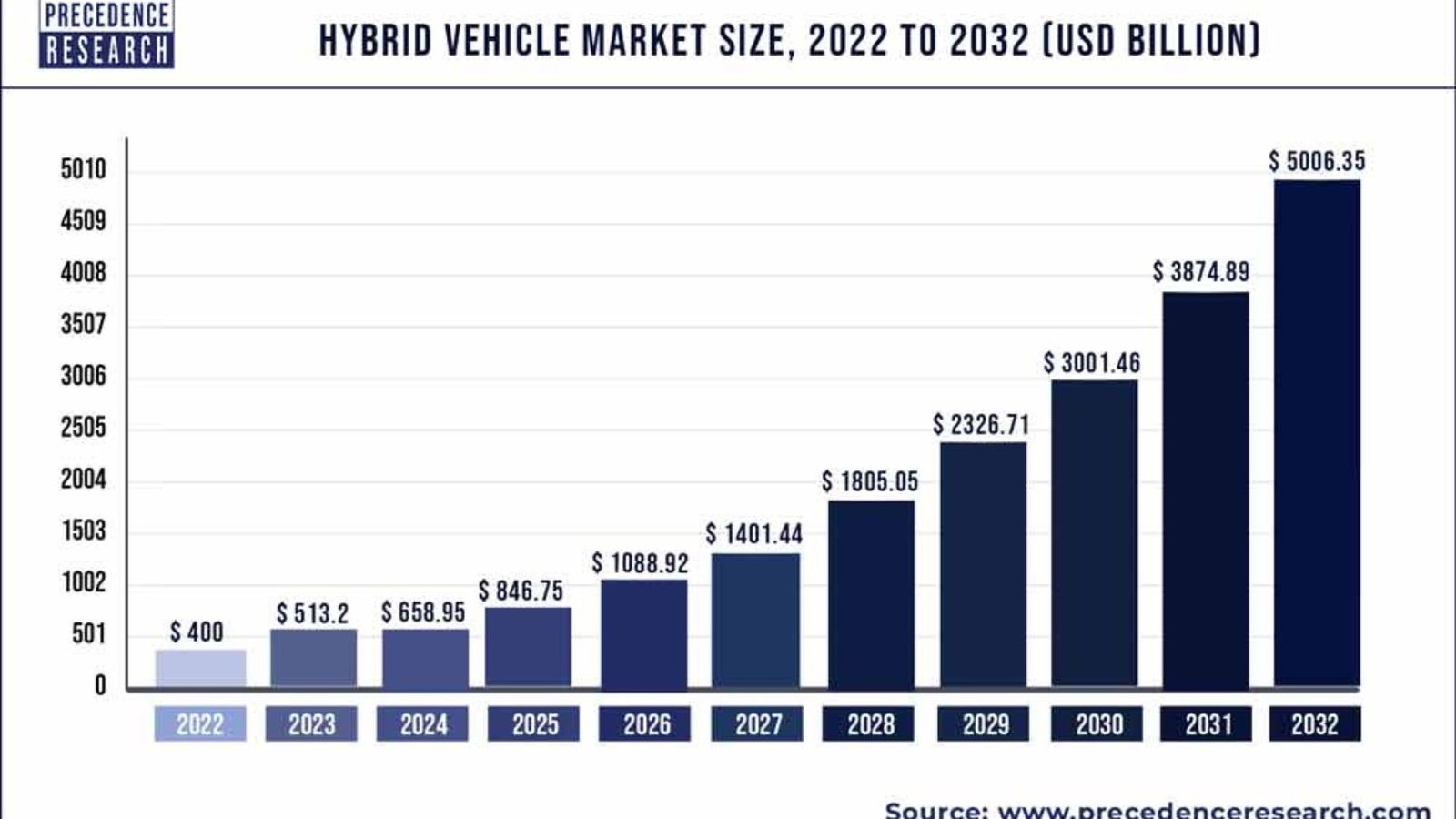Market Growth Trends for Hybrid Vehicles
Hybrid vehicles are becoming increasingly popular as the automotive industry evolves toward greener technologies. With growing concerns about environmental sustainability and fuel efficiency, hybrid vehicles have captured the attention of consumers and manufacturers alike. In this post, we’ll delve into the market growth trends for hybrid vehicles, examining the factors driving their popularity and what the future holds for this segment.

1. Rising Consumer Demand
Growing Environmental Awareness
One of the primary drivers of market growth for hybrid vehicles is rising consumer demand for environmentally friendly transportation options. As awareness of climate change and air pollution increases, more consumers are seeking vehicles that offer lower emissions and better fuel efficiency. Hybrid vehicles, which combine traditional internal combustion engines with electric propulsion, address these concerns effectively.
Fuel Efficiency and Cost Savings
Hybrid vehicles offer significant fuel savings compared to traditional gasoline-powered cars. With rising fuel prices, consumers are increasingly drawn to hybrids for their ability to reduce fuel costs. The combination of electric and gasoline power allows hybrids to achieve higher miles per gallon (MPG), making them an attractive option for cost-conscious buyers.
2. Technological Advancements
Improved Battery Technology
Technological advancements in battery technology are fueling the growth of hybrid vehicles. Modern hybrids utilize advanced lithium-ion batteries, which offer higher energy density, faster charging, and longer lifespans compared to older battery types. These improvements enhance the performance and efficiency of hybrid vehicles, making them more appealing to consumers.
Enhanced Powertrains and Efficiency
Hybrid vehicles are benefiting from innovations in powertrain technology. Advances in hybrid systems, such as more efficient electric motors and optimized internal combustion engines, contribute to better overall performance and fuel efficiency. As manufacturers continue to refine these technologies, hybrid vehicles are becoming more competitive in the automotive market.
3. Government Policies and Incentives
Supportive Legislation
Government policies and incentives play a crucial role in the growth of the hybrid vehicle market. Many governments offer tax credits, rebates, and other incentives to encourage the adoption of hybrid and electric vehicles. These financial incentives make hybrids more affordable and attractive to potential buyers.
Emission Regulations
Stringent emission regulations are driving the shift toward hybrid vehicles. Governments worldwide are implementing stricter standards to reduce greenhouse gas emissions and improve air quality. Hybrid vehicles, with their reduced emissions compared to conventional cars, align well with these regulations, further boosting their market growth.
4. Expanding Model Availability
Greater Variety of Options
The market for hybrid vehicles is expanding as manufacturers introduce a wider range of models. From compact cars to SUVs and trucks, hybrids are now available in various segments, catering to different consumer preferences. This increased variety helps meet diverse needs and broadens the appeal of hybrid vehicles.
Enhanced Features and Technology
New hybrid models come equipped with advanced features and technologies, enhancing their appeal to consumers. Innovations such as improved infotainment systems, advanced driver assistance features, and luxurious interiors are making hybrid vehicles more attractive to a broader audience.
5. Global Market Expansion
Emerging Markets
The growth of hybrid vehicles is not limited to established automotive markets. Emerging markets, particularly in Asia and Latin America, are experiencing increasing demand for hybrid vehicles. As these regions develop their infrastructure and improve fuel efficiency standards, hybrid vehicles are becoming a popular choice for consumers seeking greener transportation options.
International Collaborations
International collaborations between automakers and technology providers are driving global market expansion for hybrid vehicles. By leveraging expertise and resources from different regions, manufacturers can accelerate the development and deployment of hybrid technologies, contributing to market growth.
6. Competitive Landscape
Increased Competition
As hybrid vehicles gain popularity, the competitive landscape in the automotive industry is evolving. Traditional automakers are expanding their hybrid offerings, while new entrants and technology startups are also entering the market. This increased competition drives innovation and helps to lower costs, making hybrid vehicles more accessible to a wider range of consumers.
Strategic Partnerships
Strategic partnerships between automakers, battery manufacturers, and technology firms are shaping the future of hybrid vehicles. These collaborations focus on advancing battery technology, improving powertrain systems, and developing new hybrid models. Such partnerships contribute to the continued growth and advancement of the hybrid vehicle market.
7. Future Outlook
Projections and Trends
The future outlook for hybrid vehicles is promising, with continued growth expected in the coming years. Market research indicates that hybrid vehicle sales will continue to rise as technology advances, consumer preferences shift, and supportive policies remain in place. Innovations in battery technology, powertrain efficiency, and global market expansion are likely to drive sustained growth in the hybrid vehicle sector.
Integration with Electric Vehicles
Hybrid vehicles are also paving the way for the future of electric vehicles (EVs). As technology progresses, hybrids are likely to integrate more closely with EV advancements, leading to new hybrid-electric models that offer enhanced performance and efficiency. This integration will further shape the evolution of the automotive industry and contribute to a greener future.
Conclusion
In conclusion, the market growth trends for hybrid vehicles is experiencing significant growth driven by rising consumer demand, technological advancements, supportive government policies, and expanding model availability. As the automotive industry continues to evolve, hybrid vehicles are playing a crucial role in the transition toward more sustainable transportation. With ongoing innovations and a favorable market environment, hybrid vehicles are well-positioned for continued success and growth in the years to come.

